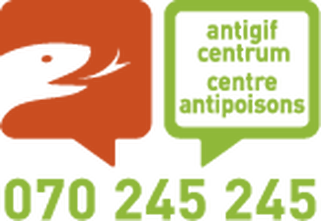A poison is any substance (a solid, liquid, or a gas) which can cause damage if it enters the body in sufficient quantities. It can be swallowed, breathed in, absorbed through the skin or injected. Substances such as prescription or non-prescription drugs, household cleaning and DIY products and some plants and fungi can be harmful if you swallow them.
Some poisons cause an all over reaction and can result in seizures, blurred vision, acute anaphylaxis and can be fatal – be cautious and always get the child quickly seen by a medical professional.
What to look for
If you think a child may have swallowed poison, these are the five key things to look for:
1. If the child is responsive ask them what they have taken, when they took it and how much they took. Look for clues - for example poisonous plants, berries or empty containers. The emergency services will want to know this information. When you go to hospital, take the packaging and the remains of anything you think they have swallowed as this will help the doctors to treat them in the best way possible.
Tip : If a child has swallowed a berry from a plant – take a photo of the plant and a leaf as well to show to the doctors
2. Call 112 as soon as possible. If you can’t call 112, get someone else to do it. The substance could be extremely harmful and the person may need urgent medical attention.
3. Do not make the person sick! By making them sick, you can cause further damage to their throat or block their airway. But, if they vomit naturally then put some of their vomit into a bag or container and give it to the ambulance crew. This may help them identify the poison.
4. If the casualty's lips are burnt by corrosive substances, ideally get them to swill milk or water around their mouth and spit it out and then give them small sips of milk or water to dilute the product down their throat.
5. If the casualty becomes unresponsive and stops breathing, you will need to resuscitate them by giving them breaths followed by chest compressions.
If the casualty is contaminated with chemicals remember to protect yourself and wear protective gloves, goggles and/or a mask. If they have become unresponsive and stopped breathing after eating something corrosive – protect yourself if doing mouth to mouth resuscitation. This can be done with a pocket mask or plastic bag with a hole in it – cover the mouth with the bag and breath through the hole in the bag into the nose – thereby protecting yourself and ensuring that you are not burnt as well.
Some poisons cause an all over reaction and can result in seizures, blurred vision, acute anaphylaxis and can be fatal – be cautious and always get the child quickly seen by a medical professional.
What to look for
If you think a child may have swallowed poison, these are the five key things to look for:
- Nausea and vomiting (sometimes blood-stained) and later diarrhoea
- Cramping stomach pains
- Pain or a burning sensation
- Partial loss of responsiveness
- Seizures
1. If the child is responsive ask them what they have taken, when they took it and how much they took. Look for clues - for example poisonous plants, berries or empty containers. The emergency services will want to know this information. When you go to hospital, take the packaging and the remains of anything you think they have swallowed as this will help the doctors to treat them in the best way possible.
Tip : If a child has swallowed a berry from a plant – take a photo of the plant and a leaf as well to show to the doctors
2. Call 112 as soon as possible. If you can’t call 112, get someone else to do it. The substance could be extremely harmful and the person may need urgent medical attention.
3. Do not make the person sick! By making them sick, you can cause further damage to their throat or block their airway. But, if they vomit naturally then put some of their vomit into a bag or container and give it to the ambulance crew. This may help them identify the poison.
4. If the casualty's lips are burnt by corrosive substances, ideally get them to swill milk or water around their mouth and spit it out and then give them small sips of milk or water to dilute the product down their throat.
5. If the casualty becomes unresponsive and stops breathing, you will need to resuscitate them by giving them breaths followed by chest compressions.
If the casualty is contaminated with chemicals remember to protect yourself and wear protective gloves, goggles and/or a mask. If they have become unresponsive and stopped breathing after eating something corrosive – protect yourself if doing mouth to mouth resuscitation. This can be done with a pocket mask or plastic bag with a hole in it – cover the mouth with the bag and breath through the hole in the bag into the nose – thereby protecting yourself and ensuring that you are not burnt as well.

For all urgent questions about poisoning in Belgium you can call the:
Antigif Centrum/Centre Antipoisons
Open 24 hours a day, 7 days a week
Antigif Centrum/Centre Antipoisons
Open 24 hours a day, 7 days a week
Written by Kate Ellwood First Aid Instructor and Assessor (September 2019)
LifeFirst provides this information for guidance and it is not in any way a substitute for medical advice. LifeFirst is not responsible or liable for any diagnosis made, or actions taken based on this information. It is strongly advised that you attend a First Aid course to understand what to do in a medical emergency.
LifeFirst provides this information for guidance and it is not in any way a substitute for medical advice. LifeFirst is not responsible or liable for any diagnosis made, or actions taken based on this information. It is strongly advised that you attend a First Aid course to understand what to do in a medical emergency.

